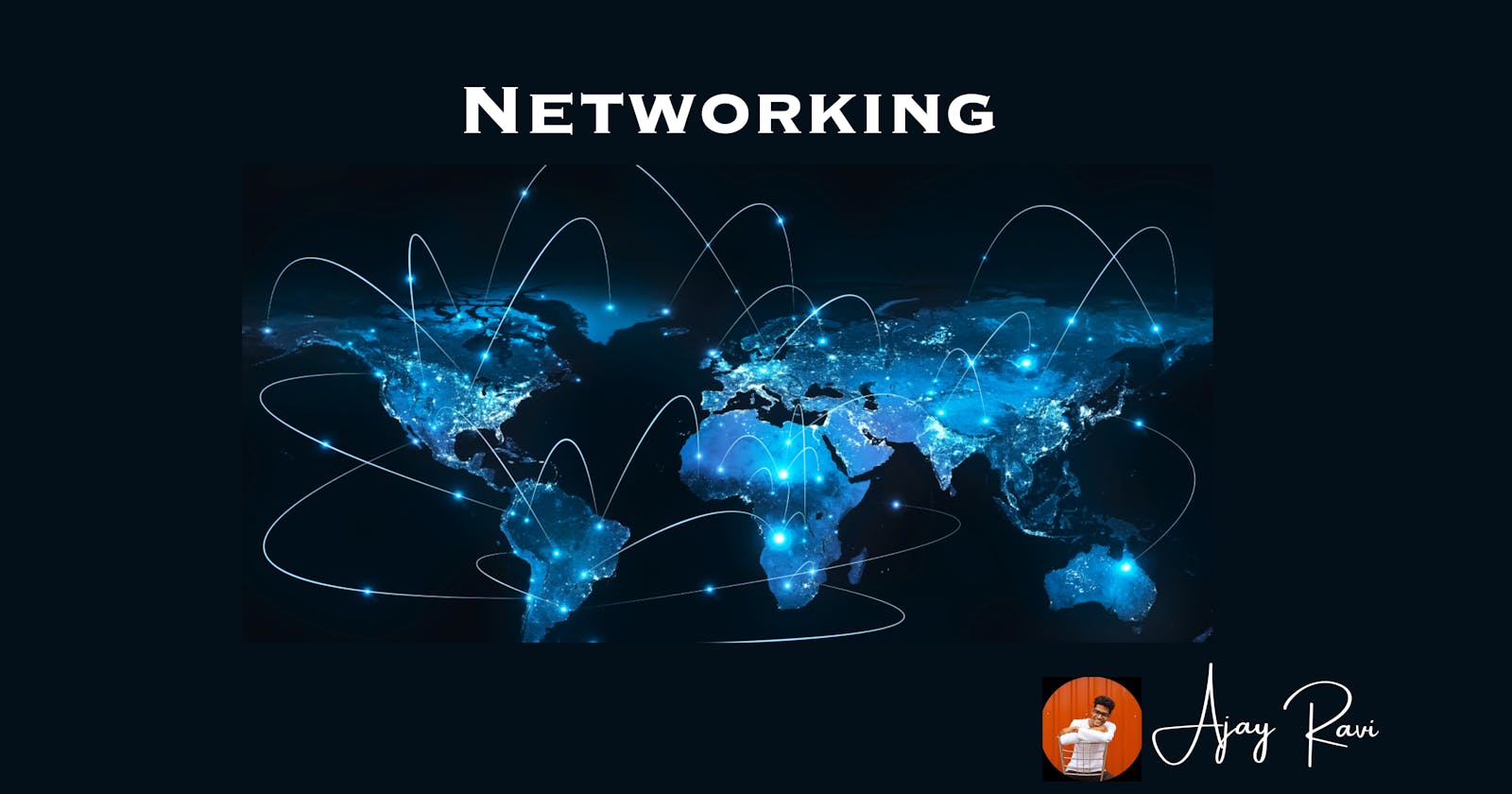Introduction:
In today's interconnected world, understanding the fundamentals of networking is crucial for efficient communication and connectivity. In this blog post, we will delve into essential networking concepts, shedding light on IP assignment, the role of routers, modems, switches, DHCP and NAT, port numbers, reserved ports, and device identification. Let's explore these concepts in detail and unlock the power of networking.
What is the Internet?
The Internet is a global network of interconnected computers and devices that facilitates the exchange of information and services worldwide. It operates using a standardized set of protocols, enabling seamless communication and access to resources.
What are IP Addresses and how it is assigned?
Every device in this vast network is given a unique identity called an IP address. Just like your home address, an IP address distinguishes one device from another in the digital realm. In the earlier days, we relied on IPv4, which provided approximately 4.3 billion possible combinations. However, as the world grew more connected, it became clear that more addresses were needed to accommodate the expanding array of devices. Then IPv6 was introduced, offering an astonishingly vast address space of 340 undecillion unique combinations.
IP addresses can be assigned statically or dynamically. Static IP assignment involves manually configuring the IP address on the device itself. This method is typically used for devices that require consistent and unchanging addresses, such as servers.
Dynamic IP assignment utilizes a protocol called DHCP (Dynamic Host Configuration Protocol). DHCP servers automatically assign IP addresses to devices on a network, ensuring efficient utilization of available addresses. When a device connects to a network, it sends a DHCP request, and the DHCP server responds with an available IP address.
Internet Service Providers (ISPs):
ISPs are companies that provide internet access to individuals and organizations. They own and manage the infrastructure required for connectivity. ISPs establish connections between users and the internet, enabling access to online resources and services. They serve as the gateway to the internet for end-users, offering various types of internet connections such as DSL, cable, fiber-optic, or satellite. This equipment can vary depending on the setup, but it typically involves a modem and a router.
ISPs act as intermediaries, bridging the gap between end-users and the internet. They establish connections to the internet through various means, including wired connections and satellite links.
Wired connections, such as fiber-optic cables, copper cables, or coaxial cables, are the primary choice for ISPs. These cables provide reliable, high-bandwidth connections capable of handling large volumes of data. Wired connections offer low latency and greater stability compared to wireless options.


Satellite connections, on the other hand, utilize geostationary satellites to transmit and receive data. While satellite connections provide coverage in remote areas and have global reach, they suffer from higher latency and limited bandwidth compared to wired connections.
Routers:
Routers are crucial networking devices that connect multiple devices within a local network and facilitate communication between different networks. They act as traffic managers, directing data packets between devices and determining the best path for data to reach its destination.
Routers use routing tables and protocols such as RIP (Routing Information Protocol) or OSPF (Open Shortest Path First) to make intelligent decisions about how to forward data. They analyze IP addresses, evaluate network conditions, and choose the most efficient routes to ensure data reaches its intended recipient.
Routers also assign IP addresses to devices using the DHCP (Dynamic Host Configuration Protocol). DHCP is a network protocol that allows for the automatic assignment of IP addresses to devices on a network. When a device connects to a network, it sends a DHCP request to the router. The router, acting as a DHCP server, responds by assigning an available IP address from its configured IP address pool to the requesting device.

What is the role of a modem?
Modems, short for modulator-demodulator, are devices that bridge the gap between digital signals from devices and the analog signals used for transmission over the ISP's network infrastructure. Modems convert the digital data generated by devices into a suitable format for transmission and vice versa. They are responsible for establishing the physical connection between the user's network and the ISP.
Modems come in different types based on the type of internet connection, such as DSL modems, cable modems, fiber modems, or satellite modems. They are often integrated into routers, providing a convenient all-in-one solution for internet connectivity.
Modern routers often come with an integrated modem, combining the functionalities of both a modem and a router into a single device. These devices are commonly referred to as "modem routers" or "gateway routers."

How does a router know to which device it should send a response from the internet?
The router uses Network Address Translation (NAT) to determine the correct device. When a device sends a request to the internet, the router assigns a unique source IP address and port number to that request. The router then translates this information to its own IP address and port number. When the response arrives, the router checks its NAT mapping table to find the corresponding original IP address and port number of the requesting device. It then forwards the response to the correct device based on this information.
How does a device know which application the response should be sent to?
Once the router successfully delivers the response to the device, it is up to the device's operating system and network stack to determine which application or service should receive the response. The process involves the use of port numbers.
Port numbers are specific numbers associated with network protocols and services. They act as identifiers for different applications or services running on a device. Port numbers range from 0 to 65535 and are divided into three categories: well-known ports (0-1023), registered ports (1024-49151), and dynamic or private ports (49152-65535). Well-known ports are reserved for standard protocols and services, such as port 80 for HTTP (Hypertext Transfer Protocol) or port 443 for HTTPS (HTTP Secure). Registered ports are assigned to specific applications or services by the Internet Assigned Numbers Authority (IANA). Dynamic or private ports are available for temporary use by applications and can be dynamically assigned by the operating system.
When the response arrives at the device, the operating system examines the destination port number in the response packet. It matches the port number to the specific application or service that initially sent the request and directs the response to the corresponding application or service.
Conclusion:
Understanding the basics of networking is essential in our interconnected world. From IP assignment and the roles of routers, modems, switches, DHCP, and NAT, to the significance of port numbers, each component plays a vital role in establishing seamless communication and connectivity. Armed with this knowledge, you can navigate the complexities of modern networks, optimize your internet experience, and embrace the transformative power of networking.
This glimpse into the world of networking has laid a solid foundation for understanding how devices communicate and connect in the digital realm.
In our next blog post, we will dive deeper into the fascinating world of internet protocols and explore the OSI (Open Systems Interconnection) model. Stay tuned to unravel the inner workings of network protocols, data encapsulation, and the seven layers of the OSI model. Get ready to expand your knowledge and explore the intricacies of networking!
